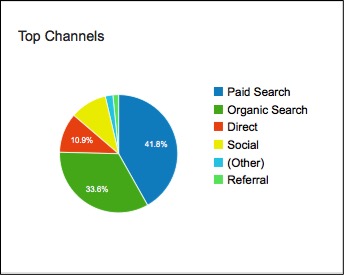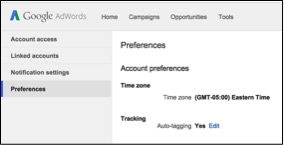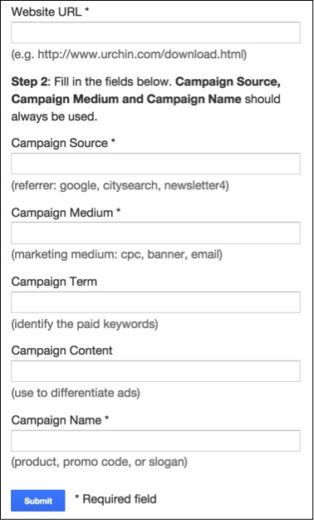URL tracking takes time to set up, but the rewards make it time well spent. Why is it worth it? Google Analytics. The whole purpose of tracking URLs is that we get the reward of having Google Analytics data for each platform or campaign.
Everything In One Place
When paid search can incorporate more than five different platforms, it is nice to have that one place that combines all the data. Though this task can be achieved by pulling numbers and combining in Excel, already having the numbers ready can save hours. While there are third party platforms that combine all this information for you, Google Analytics is free.
Below you can see that we are using Google, Facebook, Bing and Gemini. All four platforms are considered part of paid search.

I can see not only how they compare to each other, but also how their combined paid search numbers compare with other channels, like organic or referrals.
All About The Revenue
For me, revenue on its own sells it. Not all platforms offer tracking beyond conversions. When all your products cost different amounts, knowing the difference between two conversions worth $1,000 and ten conversions worth $100 is necessary.

Prioritizing certain platforms or campaigns is easier when there is a clear picture of what is bringing in the largest amount of revenue or best ROAS.
Different Conversion Types
Not every account gets one single conversion type. If your accounts are like most of mine, you have phone calls, contact us forms, and lead generation mixing with eCommerce among many others. Each has value and is necessary to measure for performance. When URL tracking is implemented correctly, we are able to see what platforms are bringing in which type(s) of conversion with associated revenue or goal values.
Realistic View of Traffic
What happens if you don’t implement URL tracking? Direct traffic increases and there is an unrealistic view of where the visitors are coming from and which channels are performing well.

Without URL tracking, Google Analytics will report those paid search visitors as direct traffic. You lose out on knowing how paid search traffic compares to all other channels along with additional data on web page metrics, like bounce rate or pages-per-visit.
Let’s Talk Setup
AdWords is the easiest, because it only requires setting up auto-tagging. Auto-tagging is selected in the Account Settings Tab.

After setting up auto-tagging, Google will automatically tag all the ads in your account. This function saves you time creating your own tags. However, there are reasons to still manually tag ads in AdWords. This generally depends on what CRM system that is being used.
For any of your other platforms, such as Facebook, LinkedIn, Bing, AdRoll or Twitter, tracking URLs will need to be created. The Google URL Builder is a tool that will add custom parameters to the end of your URLs. The website URL, campaign source, campaign medium and campaign name are the only necessary parameters, though additional ones can be added for ad groups, keywords and any other distinguishing parameters that you would like to add.

There is another option available for Google Chrome users. The option to download the Google Analytics Builder app offers the exact same features as the Google URL Builder above. I still tend to use the Google URL Builder, but additional options are always useful. If you have different destination URLs within the same campaign, there is the option to use an excel function to add the additional tracking to the URL without entering each website URL into the URL builder.
Conclusion
Adding URL tracking to the destination URLs for your ads can have plenty of benefits. The only downside is the time that it takes for the initial setup. However, with the tracking URL builders that are available, the entire process involves a minimal time commitment. For me, Google URL tracking is part of the checklist for any new campaign created or ad uploaded. It should be a basic best practice that everyone uses within their paid search account.
Have we missed any benefits of URL tracking? Please leave your comments below.



